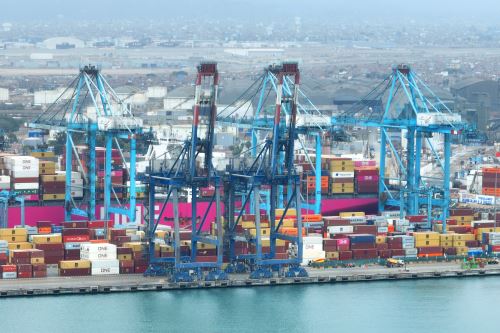Our Terms & Conditions | Our Privacy Policy
Exports: Peru consolidates position in global trade | News | ANDINA
In an international context characterized by economic turbulence and geopolitical tensions, the Peruvian export sector is consolidating as a bastion of stability and growth.
The results for the first quarter of 2025 are extraordinary: exports reached a record figure of US$20.625 billion, a 27.3% increase compared to the same period last year.
This outstanding performance not only reaffirms the effectiveness of the economic model focused on foreign trade, but also projects a promising future for the national economy as a whole.
The success of Peruvian exports is built on a diversification strategy that has proven its effectiveness in the face of international market volatility.
Although mining remains the pillar of exports, accounting for over 50% and posting a 29% increase in the first quarter, other sectors show dynamism that strengthens the country’s economic structure, according to an article published in the Official Gazette El Peruano.
Agro-exports
Agro-exporting, the second most important sector, grew 21.2%, driven by products such as cacao and its derivatives, which posted an extraordinary 129% increase.
Traditional fruits like grapes and mangoes also maintained their upward trend, with increases of 21%. These figures are not coincidental, but rather the result of a sustained commitment to modernizing the Peruvian countryside and conquering demanding international markets.
The fishing sector, with an increase of 37%, and metallurgy, with 29%, complete a picture in which practically all components of Peru’s export basket show positive signs. This sectoral diversification constitutes a safeguard against possible fluctuations in certain markets or products.
Leading Regions
One of the most relevant aspects of the current export boom is its broad geographic reach. Inland regions increased their exports by 28.6%, even surpassing the growth rate of Lima and Callao (20.8%).
This phenomenon represents a historic opportunity to reduce development gaps between the capital and the rest of the national territory.
It is particularly encouraging that 21 of the 23 inland regions registered increases in their exports. Cases such as Huanuco (277%), San Martin (111%), Apurimac (106%), and Ayacucho (87%) demonstrate that Peru’s productive potential extends well beyond the traditional boundaries of economic activity.
This decentralization of export activity has profound implications for social development.
The generation of formal and quality employment in historically marginalized areas can significantly contribute to reducing poverty and inequality.
Foreign trade thus becomes not only an economic engine but also a factor of territorial and social cohesion.
Market Diversification
Peru’s export growth is also supported by a smart market diversification strategy.
While China and the United States continue to be the main trading partners, with trade increasing by over 30%, other markets show relevant dynamism.
Trade with Asia increased by 30.8%, led by South Korea (31.1%), India (25.9%), and Japan (4%). In Europe, trade with the European Union grew by 17.3%.
This geographic diversification represents a strategic strength in an international context marked by commercial and geopolitical tensions.
Peru’s ability to maintain balanced trade relations with the world’s major economic powers and, at the same time, explore new markets, is an invaluable asset for its future development.
Ongoing negotiations for trade agreements with Indonesia, Guatemala, El Salvador, Uruguay, and India open promising prospects for further expanding the range of destinations for Peruvian products.
This market diversification strategy reduces vulnerability to unilateral changes in other countries’ trade policies and consolidates Peru’s position as a key player in international trade.
Infrastructure
A key factor in Peru’s export performance is the development of logistical and port infrastructure.
The 2025–2028 Macroeconomic Projections Update Report by the Ministry of Economy and Finance (MEF) highlights that the port system constitutes strategic infrastructure for the growth of productive activity.
Thus, in 2024, 128 million tons were handled, an increase of 8.4% compared to 2023, positioning Peru in fifth place in Latin America in terms of integration into global maritime trade.
The recent entry into operation of the Port of Chancay marks a milestone in Peru’s international projection.
This new logistics hub, which recorded over US$400 million in foreign trade activity in the first quarter, will allow the country to consolidate itself as a logistics hub in the South Pacific, significantly reducing shipping times to Asia.
Editor’s note: English version by Jhaen Miranda.
Images are for reference only.Images and contents gathered automatic from google or 3rd party sources.All rights on the images and contents are with their legal original owners.



Comments are closed.